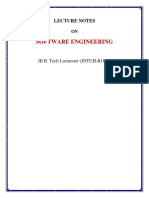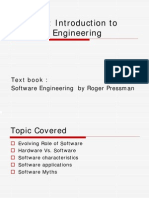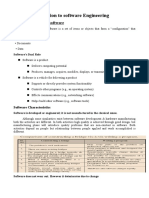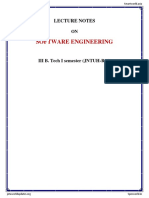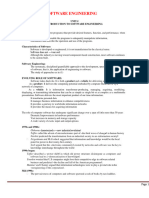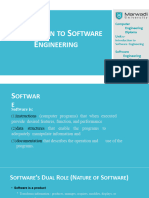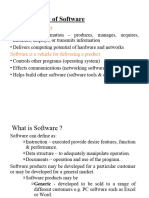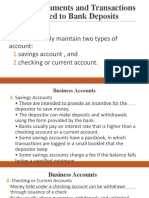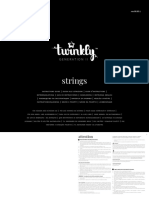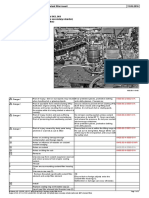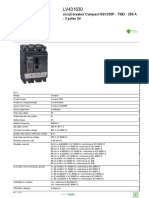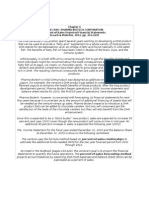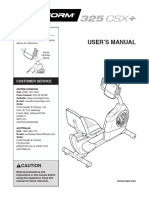0% found this document useful (0 votes)
16 views17 pagesSEM-C0518-Module I Introduction To Software Engineering
The document provides an overview of software engineering, defining it as a systematic approach to software development, operation, and maintenance. It discusses the evolution of software roles, various software types, and common myths surrounding software development. Additionally, it outlines a generic process framework, the Capability Maturity Model Integration (CMMI), and its maturity and capability levels to enhance software quality and organizational processes.
Uploaded by
Chavva Akshitha ReddyCopyright
© © All Rights Reserved
We take content rights seriously. If you suspect this is your content, claim it here.
Available Formats
Download as PDF, TXT or read online on Scribd
0% found this document useful (0 votes)
16 views17 pagesSEM-C0518-Module I Introduction To Software Engineering
The document provides an overview of software engineering, defining it as a systematic approach to software development, operation, and maintenance. It discusses the evolution of software roles, various software types, and common myths surrounding software development. Additionally, it outlines a generic process framework, the Capability Maturity Model Integration (CMMI), and its maturity and capability levels to enhance software quality and organizational processes.
Uploaded by
Chavva Akshitha ReddyCopyright
© © All Rights Reserved
We take content rights seriously. If you suspect this is your content, claim it here.
Available Formats
Download as PDF, TXT or read online on Scribd
/ 17

















